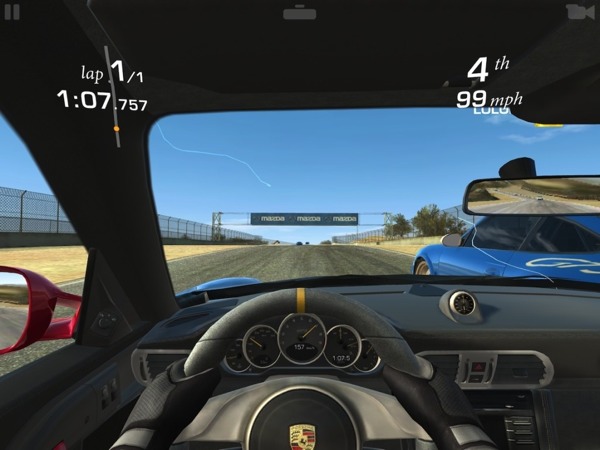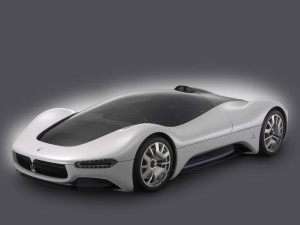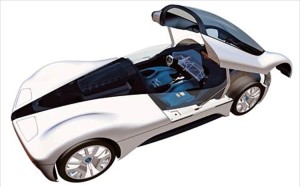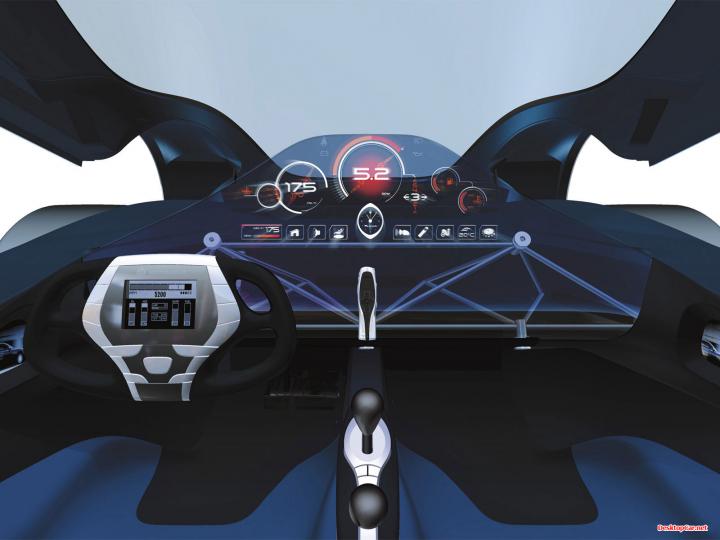-

-

-

-

-

-

-

-

-

-

-
-

-

-

-

-

-

-

-

-

-

-

-

-

-

-

-

-

-

-

-

-

-

-

-

-

-

-

-

-

-

-
-

-

-
 TOTW: Google's Project Ara Modular Phone May Be The Future Of SmartphonesOctober 30, 2014
TOTW: Google's Project Ara Modular Phone May Be The Future Of SmartphonesOctober 30, 2014 -

-

-

-

-

-

-

-

-

-

-

-

-

-

-
-
-

-

-

-

-

-

-

-

-

Posts tagged cars
The Almost Impossible Ethical Dilemma Behind Autonomous Cars
09 years
You’re driving down the road in your Toyota Camry one morning on your way to work. You’ve been driving for 15 years now and pride yourself on the fact that you’ve never had a single accident. And you have to drive a lot, too; every morning you commute an hour up to San Francisco to your office. You pull into a two-lane street lined on both sides with suburban housing, and suddenly realize you took a wrong turn. You quickly look down at your smartphone, which is running Google Maps, to find a new route to the highway. When you look back up, you’re surprised to see a group of 5 people, 3 adults and 2 kids, have unknowingly walked into your path. By the time you or the group notice each other it’s too late to hit the break or for the pedestrians to run out of the way. Your only option to save the 5 people from being injured, or even killed, by your car is to swerve out of the way… right into the path of a woman walking her child in a stroller. You notice all of this in the half a second it takes you to close the distance between you and the group to only 3-4 yards.
You now have but milliseconds to decide what path to take. What do you do? But more to the point of this article, what would an autonomous car do?
That narrative is a variant of the classic situation known as the Trolley Problem. The Trolley Problem has many variations, some more famous than others, but all of them follow the same general storyline: you must choose between accidentally killing 5 people (e.g., hitting them with your car) or purposefully making an action (e.g., swerving out of the way) that kills one person. This type of situation is obviously one that no one wants to find themselves in, and is so unlikely that most people avoid it their entire life. But in the slim cases where this situation occurs, the split-second decision a human makes will vary from person to person and from situation to situation.
But no matter the outcome of the tragic event, if it does end up happening, the end result will be generally be the fault of a distracted driver. What will happen, though, when this decision is completely in the hands of an algorithm, as it will be when autonomous cars ubiquitously roam the streets years from now. Every new day autonomous cars become more and more something of the present rather than the future, and that leaves many worried. Driving has been ingrained in us for century, and for many, giving that control up to a computer will be frightening. This is despite the fact that in the years that autonomous cars have been on the roads, their safety record has been excellent, with only 14 accidents and no serious injuries. While 14 may seem like a lot, keep in mind that each and every incident was actually the result of human error by another car, many of which were the result of distracted driving.
I’d say that people are more worried about situations like the Trolley Problem, rather than the safety of the car itself, when driving in an autonomous car. Autonomous cars are just motorized vehicles driven by algorithms, or intricate math equations that can be written to make decisions. When an algorithm written to make a car change lanes and parallel park has to make almost ethically impossible decisions, choosing between just letting 5 people die or purposely killing 1 person, we can’t really predict what it would do. That’s why autonomous car makers can’t just let this problem go, and have to delve into the realm of philosophy and make an ethics setting in their algorithms.
This won’t be an easy task, and will require everyone, from the car makers to the customers, thinking about what split-second decision they would make, so they can then program the cars to do the same. This ethics setting would have to work in all situations; for instance, what would it do if instead of 5 people versus one person, it was a small child versus hitting an oncoming car? One suggested solution would be to have adjustable ethics setting, where the customer gets to choose whether they would put their own life over a child’s, or to kill one person over letting 5 people die, etc. This would redirect the blame back to the consumer, giving him or her control over such ethical choices. Still, that kind of a decision, which very well could determine fate of you and some random strangers, is one that nobody wants to make. I certainly couldn’t get out of bed and drive to work knowing that a decision I made could kill someone, and I’d bet I’m not alone on that one. In fact, people may even avoid purchasing an autonomous car with an adjustable ethics setting just because they don’t want to make that decision or live with the consequences.
So what do we do? Nobody seems to want to make kind of decisions, even though it is absolutely necessary. Jean-Francois Bonnefon, at the Toulouse School of Economics in France, and his colleagues conducted a study that may help us all with coming up with an acceptable ethics setting. Bonnefon’s logic was that people will be most happy with driving a car that has an ethics setting close to what they believed is a good setting, so he tried to gauge public opinion. By asking several hundred workers at Amazon’s Mechanical Turks artificial intelligence lab a series of questions regarding the Trolley Problem and autonomous cars, he came up with a general public opinion of the dilemma: minimize losses. In all circumstances, choose the option in which the least amount of people are injured or killed; a sort of utilitarian autonomous car, as Bunnefon describes it. But, with continued questioning, Bunnefon came to this conclusion:
“[Participants] were not as confident that autonomous vehicles would be programmed that way in reality—and for a good reason: they actually wished others to cruise in utilitarian autonomous vehicles, more than they wanted to buy utilitarian autonomous vehicles themselves.”
Essentially, people would like other people to drive these utilitarian cars, but less enthusiastic about driving one themselves. Logically, this is a sensible conclusion. We all know that we should make the right decision and sacrifice your life over that of someone younger, like a child, or a group of 3 or 4 people, but when it comes down to it only the bravest among us are willing to do so. While these scenarios are far and few between, the decisions made by the algorithm in that sliver or a second could be the difference between the death of an unlucky passenger or an even more unlucky passerby. This “ethics setting” dilemma is a problem that can’t just be delegated to the engineers at Tesla or Google or BMW; it has to be one that we all think about, and make a collective decision for that will hopefully make the future of transportation a little more morally bearable.
AOTW: Real Racing 3
0Since Apple devices have come out, developers have been looking for new ways to use all iOS’ amazing and useful abilities. Many apps use Apple’s accelerometer (tilt sensor), such as Doodle Jump. Racing games have also exploited this piece of hardware by making it incredibly easy and fun to steer and race cars. Apple’s perfect-sized iPad Mini complements racing games even more. Unfortunately, not all racing games are good. The one I think deserves the number one spot is Real Racing 3.

Real Racing 3’s main game is where you compete in different tournaments. The more trophies you earn, the more tiers, or groups of races inside the tournament, you unlock. Once you get enough trophies, you unlock more tournaments.There are many types of races that you can compete in. Here are a couple:
Cup
A cup is basically a big race with 15-20 racers in it. You try to get to the finish first. Easy. Usually participated in a longer course.
Elimination
Every 20 seconds, the last place racer is eliminated. If you are the last one standing, you win. The trick is, you can be conservative, just stay out of last.
Speed Snap
Try to get the best speed coming straight around a turn. Personally, I find this the hardest.
Head To Head
You against someone else. 1 on 1. Simple. Beat him.

Your cars are a big part of RR3. In every tournament, only a certain 4 or 5 cars can compete. You can buy or upgrade your cars using money which you get during the race. In certain races, such as the end couple in a tournament, your car will have to be upgraded to a certain PR level, or rating. You also get fame durning the race, which you accumulate to upgrade your driver level. Upgrading driver levels gives you a boots in money, which is a good incentive to do well in bigger races.

Overall, Real Racing 3 is a really fun app. Many racing apps aren’t very good, but RR3 is just great. The developers delve you into the cars and races so you just want to race more. Also, this is a really long app. Is isn’t just one of those cheap apps that you can finish in half and hour. Also, the graphics is amazing. Real Racing 3 has quality.
TOTW: Maserati Birdcage 75th
0This weeks TOTW highlights an advance in the slickness and speed of automobiles and HUDs(Heads-Up Displays) in vehicles other than jets.
Maserati’s Birdcage 75th was unveiled as a concept car at the 2005 Geneva Auto Show. Just like the Silver Lightning concept car from Mercedes Benz, it was named after an old line of Maserati cars also called Birdcages. They added the 75th because it was the 75th anniversary of Pininfarina, the team who designed it.
Other than being really thin, the Birdcage 75th doesn’t look that much different than nowadays race cars. But look at it carefully. Anything missing? Yep, IT HAS NO DOORS. To get in and out of the car, the front and back of the roof can open up, as pictured below.
Also, the Birdcage has a high-tech HUD system, mounted where a dashboard would otherwise be. Unfamiliar with HUDs? In movies, when the jet fighter pilot has a screen display that tracks the other planes and helps him target them – well that’s a HUD.
Fortunately, the HUD in the car will not shoot at enemies, but will more or less be just like a regular dashboard with a clock, tachometer and speedometer. Besides the HUD, the interior appears similar to today’s sports cars. The steering wheel does also have a screen, to show gas levels, mileage and mph.
Sadly, this car is just a concept, and not even a concept ultimately destined for the market. Maserati simply designed it as a birthday present to themselves for the original team’s 75th anniversary. Still, it shows that integrating things mostly found other places would be a good idea for making the next high-tech supercar.
TOTW: Steve Jobs’ Dream Car
1This week’s Tech Of The Week is an advance in automobile technology and the interplay between smartphones and large-scale consumer products.
Before his death, Steve Jobs had a idea to make Apple an even bigger part of society than it already is. One concept has been called the iCar.

After Jobs died, the idea for an iCar faded, but under new Apple CEO, Tim Cook, there are rumors that the company has started to rethink the idea. An Apple iCar would seamlessly interwork all of Apple’s devices. We could of course expect a typically stylish and futuristic design from Apple as well.
The interior of the car would be a key challenge for the designers. They want it to interwork multiple devices, yet be still a car, not a mobile Apple store. Also, when people shop for cars, they want comfortable seats and attractive dashboards. Apple’s design, like Ford or Tesla, could resonate with the buying public or Apple’s design success for small gadgets might not transfer to large scale products.
“Look at the car industry; it’s a tragedy in America. Who’s designing the cars?” said Mickey Drexler, a long time Apple board member. “Steve Jobs’ dream before he died was to build an iCar.” It will be interesting to see how Apple would do on the car, being a mostly smartphone and computer manufacture. Even without Jobs, Apple will most likely impress the public with a futuristic iCar, just like Steve Jobs wanted.
TechThought: Silver Lightning Concept Car
3712 years
by FFtech
in Recent Posts
Back in 1932, Mercedes Benz released their motor and Formula One racing car, the Silver Arrow. The Silver Arrow was very successful, and the most popular car for german racers in the 1930s. The trademark white, for Germany, decorating the car, the Silver Arrow won many competitions. It even won the French Grand Prix 1-2-3. This type of car was a source of pride to the company and country, and it was only logical to preserve it’s greatness.
79 years later, at the 2011 LA Design Challenge, Mercedes Benz were showing off their concept car, Silver Lighting. Silver Lightning, as you may have guessed, was inspired by Silver Arrow, reintroducing the pride of Mercedes prowess in the racing sport.
As part of their presentation, they made a short film about the car:
Silver Lightning was not only inspired by Silver Arrow, it was also inspired by classic sci-fi movies, as is a lot of technology today. Think about it. The flip-up communicators from Star Trek. In the Silver Lighning’s case, the futuristic lights on the wheels were inspired by Tron: Legacy, and the shape was inspired by Star Wars: Episode II. Along with science fiction, the Silver Lightning embodies everything we want the future to be like: flashy, slick, technologically advanced, and as cool as heck.
Silver Lightning is still not coming out any time soon. It uses a lot of future technologies, like Mag-Tech. Mag-Tech is a retractable roof system, a lot like nowadays convertible roofs. But instead of having to take the whole roof off, this technology would make it easier. Mag-Tech uses small lightweight magnetic squares to quicken the process, and can be quickly put together to make a roof, or easily contracted to make a convertible.
When you look at Silver Lightning, you may be wondering, “Where are the wheels? All I see are rings where the wheels should be!” Totally understandable. Those rings ARE actually the wheels, which is another future technology that might postpone the release of Silver Lightning. The technology is called Omni-Directional Wheels. Inside the rings, there are rollers that are all placed in a different direction, making the car able to move in all directions. This technology would let the driver be able to move the car in all different directions, not just forward and back, and is already being used in the storage and manufacturing business for lifting boxes and heavy objects. Omni-directional wheels would eliminate the need for parallel parking, which in sure many new drivers would be happy about, but the technology isn’t yet ready for implementation into racing or even regular automobiles.
Silver Lightning is designed for speed. The sleek design is perfect for zooming down the freeway or track. But just like Lamborghinis and Maseratis, it will probably become a fancy sports car that like to show off. The problem with many of these technologies, such as the segway, and even Google Glass, is that the hype surrounding them blocks out the unfortunate downsides of the technology itself. It may look cool now, but by the time we get to a point where any of these technologies would be possible, which wouldn’t be that far into the future, there will most likely already be many cars with the same design. Who knows, there may be a time when having a Maserati Silver Lighting would be just as normal as having a Toyota, but for now, it is still a futuristic concept, yet to be built.







